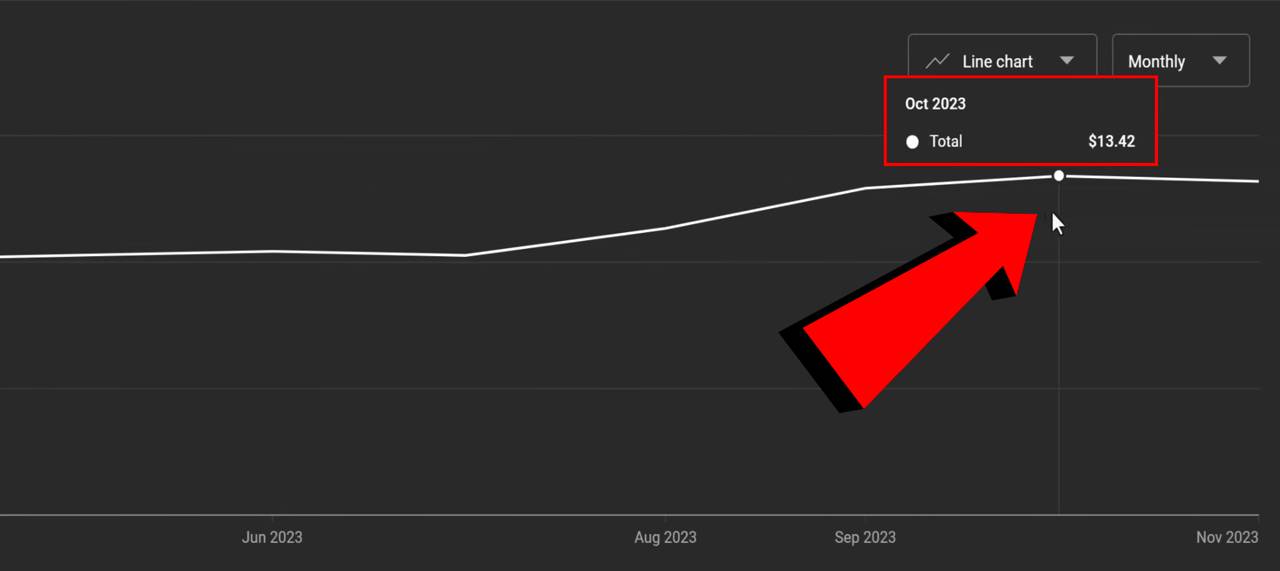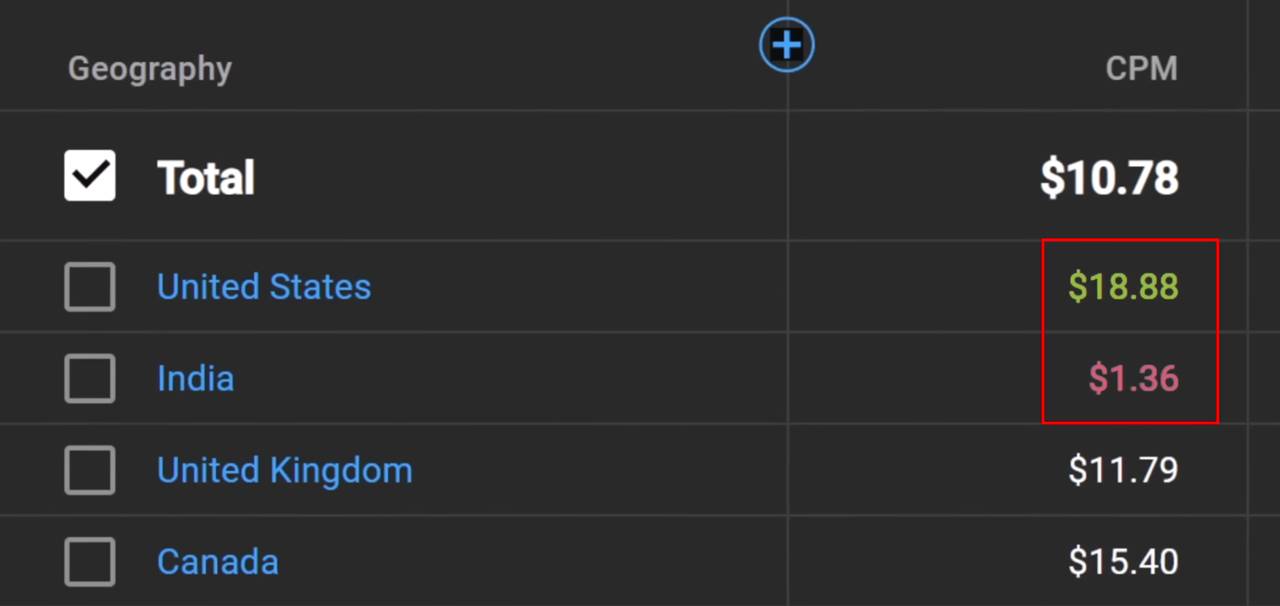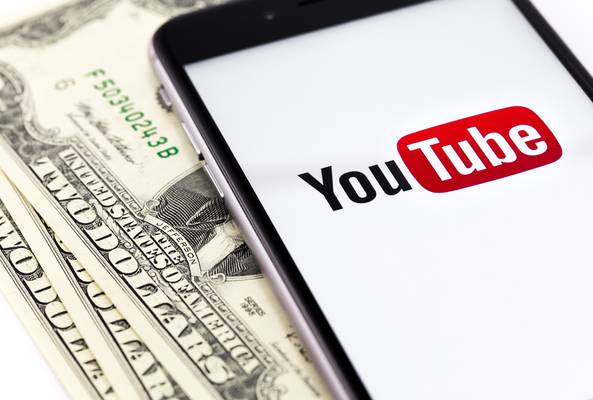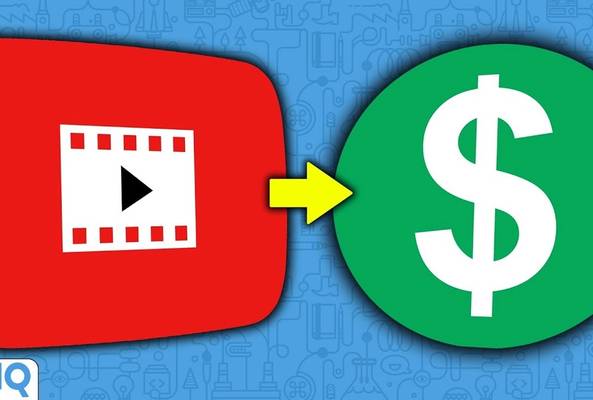In addition to being an avid movie and gaming enthusiast, Uttaran Samaddar is an experienced writer who has lent his creativity and unique perspective to various publications. He loves hearing and telling stories.
How Much Does YouTube Pay for 1 Million Views?
Earning money on YouTube is the ultimate dream for many creators, especially those looking to quit their jobs and create full-time. It takes determination and informed strategy to take the leap into full-time content creation, backed by data and best practices. The best way to soften the landing, even as a large creator, is to estimate how much money you'll make.
One of the most common questions we receive is: "How much does YouTube pay for 1 million views?" This question drives our research-based approach. After all, that's a massive number. Surely anyone can survive with that many views, right?
To find out, we monetized the vidIQ channel to see how much money we'd make ourselves. Over 18 months, we meticulously tracked revenue across long-form content, YouTube Shorts, and livestreams to provide concrete payout examples. Now, we have concrete payouts for each video type.
Ready to see how much money we made? Watch the video below to hear Rob Wilson, our YouTuber-in-residence, reveal the payout for 1 million views. Or, keep scrolling to read the answer!
YouTube Monetization: A Quick Explainer
Before we get started, it helps to understand how YouTube monetization works. There are some tricky terms and abbreviations, so we'll demystify those and explain everything in detail.
Google AdSense, or video advertising revenue, is the main source of income for most monetized creators. Making money through this revenue stream is pretty straightforward: When viewers watch or click on ads inside of a video, the creator of that content makes money. Over time, thousands of ad views can amount to thousands of dollars.
Learn beginner YouTube monetization tips and requirements right here!
Understanding CPM vs. RPM
YouTube uses two metrics, CPM and RPM, to estimate a creator's earnings. CPM (cost per mille) is how much an advertiser pays per 1,000 views to run ads on YouTube videos. For example, some videos earn a CPM of $5, which means advertisers pay $5 per 1,000 views to promote their products and services.
However, YouTube splits all the advertising revenue with creators; they get 55% while YouTube takes the remaining 45%. So, RPM (revenue per mille) is a better estimate of a creator's take-home pay. It's what they make after YouTube takes its share of advertising and fan-funding revenue.
YouTube Revenue for 1 Million Video Views
OK, we won't keep you in suspense now that we've covered the basics. Our data shows that for 1 million views, the estimated payout was approximately $3,231.42 – a figure primarily driven by ad views and YouTube Premium revenues. Video ads and YouTube Premium collectively contribute to over 90% of total revenue, highlighting the critical role of ad engagement.
We know what you're thinking: $3,231.42 sounds low for 1 million views. But Rob says it's because not every playback is monetized, as ad blockers and viewer behavior can significantly reduce the number of qualifying ad views.
"From these 1 million views, almost a quarter of a million were monetized views with a CPM of over $13," he says.

If we break this down, it looks something like this:
- Total views: 1,035,307
- Monetized views: 249,557
- CPM: $13.29
- Revenue: $3,231.42
What Drives YouTube Revenue?
Even if you get 1 million views, it doesn't mean you'll automatically become rich and quit your day job. Other factors are at play, such as how many views YouTube chooses to monetize on your channel. You also have to consider seasonality, the location of your viewers, and the topic of your videos. When you're trying to get paid, all of these variables make a difference.
- Understand that YouTube pays per ad view, not per total video view.
- CPM and RPM metrics are key to estimating earnings.
- Seasonality and viewer location significantly influence ad rates.
- Different video types (long-form, Shorts, live) yield varying revenues.
- Strategic ad placement and content niche can boost earnings.
Seasonal Fluctuations
Typically, the higher your YouTube CPM climbs, the more money you make. But did you know that CPMs fluctuate throughout the year? That's why a channel can experience revenue spikes and dips as the seasons change. In fact, CPMs on the vidIQ channel jumped from $9.21 in January to $13.42 in October.

"You might be working just as hard in January as you are in December, but the time of the year does dictate how much you're going to get paid," Rob says.
Impact of Viewer Location
Another factor impacting your YouTube revenue is where your audience lives. Some regions have bigger economies than others, so advertisers pay more money to run ads. This leads to higher CPMs in places like the US and lower CPMs in places like India.
For example, Rob says we earn an average CPM of $1.36 in India. But in the US, that figure rises to $18.88.
"Ten percent of our audience is watching from India, which is over half a million views a month," Rob says. "But if you look at the contrast in CPMs [for India and the U.S.] that's a 10X difference."

Effect of Video Topic
The topic of your videos can also affect your YouTube revenue. We've noticed that some videos have lower CPMs, while others are well into the double digits.
For example, we posted two videos on our channel: one about gaining subscribers and another about the YouTube algorithm. The algorithm video has a CPM of $20.67, but the subscriber one is stuck at $1.13.


It turns out that more US viewers watched the algorithm video, which boosted the overall CPM. On the flip side, more Indian viewers watched the subscriber video, which lowered the CPM.
"The topic and the terminology used in the packaging of the video can drastically impact the demographics of the audience, which, in turn, changes the revenue a video can potentially make," Rob says.
Revenue for 1 Million YouTube Shorts Views
So far, we've shared our revenue for long-form videos only. But what about YouTube Shorts?
If you know anything about Shorts revenue, then you know it's a lot lower than other types of content. From November 4-21, we only made $95.29 after getting 1 million views. That's an RPM of $0.09 per 1,000 views, which is pretty low.

"At this rate, you need 100 million views to bring in $10,000," Rob admits.
Earnings from Livestreams
Unlike Shorts, you can earn a lot of money with live content. In fact, the vidIQ YouTube channel made $10,806.72 after reaching 1 million streams! That's an RPM of $10.69 per 1,000 views, which is outstanding.
"This is because you can tap into your audience directly using features like Super Chats and Channel Memberships," Rob says.


Most of the revenue comes from Super Chats, which are "tips" that can only be sent during livestreams. But what inspires our viewers to donate them so frequently?
The secret is that we go live every week and answer premium questions. When creators send us a Super Chat, we prioritize answering their questions on the livestream!
Comparing Video Types for Maximum Revenue
After reaching 1 million views, it's clear that some video types are more lucrative than others. If we had to rank them, the order would be:
- Livestreams: $10,806.72
- Long-form videos: $3,231.42
- Shorts: <$100

This depends on channel size, topic, and viewer engagement, but the trend is clear. Livestreams offer dual revenue streams—through real-time fan funding and ongoing ad revenue—making them one of the most lucrative formats for creators.
Understanding Regional CPM Variations
CPM (cost per mille) rates vary significantly across regions, reflecting differences in advertising budgets, economic conditions, and audience purchasing power. In high-income markets like the United States or Western Europe, advertisers invest more in reaching audiences, driving CPMs considerably higher. Conversely, regions such as India or parts of Latin America may see lower CPMs due to smaller ad spending and varying consumer behavior.
These regional disparities can have a profound impact on overall earnings, as a creator's audience composition may determine the average revenue per thousand monetized views. Understanding these variations is crucial for creators aiming to optimize their content strategy. By analyzing their audience demographics, creators can tailor their content to attract viewers from regions with higher CPMs, potentially increasing revenue.
Additionally, creators might consider partnering with brands or running targeted campaigns that appeal specifically to lucrative markets. Monitoring analytics and adjusting content strategies can help maximize earnings even if a channel has a diverse global audience.
Maximizing Monetization Beyond Ads
While ad revenue forms the core of YouTube earnings, creators can unlock additional income streams to boost overall revenue. Diversifying monetization methods helps mitigate the fluctuations inherent in ad-based income. For example, brand partnerships and sponsorships allow creators to secure fixed deals that often pay more reliably than variable ad revenues.
Membership programs and channel subscriptions also offer a steady income, providing exclusive perks to dedicated followers. Livestreams can further enhance earnings through Super Chats, where fans directly contribute during live sessions, creating a more interactive revenue model. Merchandise sales and affiliate marketing are other avenues that help supplement earnings by leveraging the creator’s brand.
FAQs
How much does Youtube pay for 1 million views?
YouTube typically pays creators between $1,000 and $4,000 per one million views, though this range can vary based on factors like ad engagement, viewer demographics, and content niche. Actual earnings depend on the specific revenue generated from each view and can differ significantly from one channel to another.
How does YouTube monetize video views?
YouTube primarily pays per ad view rather than total video views. Only views that result in an ad impression or click contribute to revenue.
What is CPM and why is it important?
CPM (Cost Per Mille) indicates the advertiser’s rate per 1,000 ad impressions. It is crucial because it helps determine the potential revenue from ad views.
What is RPM in YouTube monetization?
RPM (Revenue Per Mille) reflects the revenue you earn per 1,000 video views after YouTube’s share is deducted, providing a more accurate insight into earnings.
Why do earnings vary even with 1 million views?
Earnings vary due to factors such as the percentage of monetized views, viewer demographics, ad engagement, time of year, and video niche.
How do seasonal trends affect YouTube revenue?
CPM rates can fluctuate with the time of year. For example, CPMs often rise during peak advertising seasons, boosting revenue during those periods.
Do YouTube creators earn from fan-funding?
Yes, many creators supplement ad revenue through fan-funding features like channel memberships, Super Chats, and other direct-payment methods.
What can creators do to boost monetization?
Creators can optimize ad placements, improve video engagement, diversify revenue streams beyond ads, and focus on high-CPM niches to boost earnings.
Is the YouTube Partner Program the only way to earn?
No, while the YouTube Partner Program is a primary source of ad revenue, creators also earn through sponsored content, merchandise, affiliate marketing, and other platforms.



